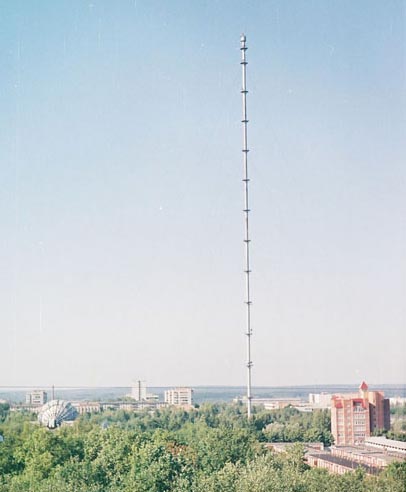


Antentop is FREE e-magazine devoted to Antennas and Amateur Radio an
Special page devoted to
RW3XA’s 9 Band HF Vertical Antenna

Custom Search
|
ANTENTOP- 01- 2005, # 007 |
RW3XA 9 Band HF Vertical Antenna |
||
|
|
|||
|
Fig.2. The basic unit |
|||
|
|
|
||
|
The design of the mast bearing is very similar to Obninsk
high-altitude meteomast, which is put into operation in 1959 year,
it's 310m high and the "ball" there is 1 meter
in diameter. The given decision helps to neutralize mechanical
resonance and vibration across the vertical tubing of the mast,
wind loading is effectively extinguished. There're also 8 radials
(4x21.5m, 4x10.6m) connected to the basic unit of the mast. There's
also an aluminum die cast box near the basic unit sized 390x250x120
mm. This box includes matching network wiring. The relays are
an anchor downwards type, i.e. in an inactive condition the anchor
freely hangs between NO contacts. The relays controlled by UTP
cable (network twisted pair) from two polarity power supplies
24V/1A (best choice for these military relay is 27V). To increase
electric durability to the induced electricity all matching network
circuits are galvanically connected to the ground. Because one
the same matching network is used to match 14 and 21 MHz band,
the left closing group of relay P5 is free (see fig.3), so it
is used to switch a feed line over to another antenna. As mentioned
before the 50-Ohm coax feed line can be of random length |
Obninsk Meteomast |
||
|
|
|
||
|
Page 34 |
|||
 |
 |
 |
 |
Just for Fun:

Powered byIP2Location.com
Thanks for your time!
Last Updated:
February 22, 2020 20:21






